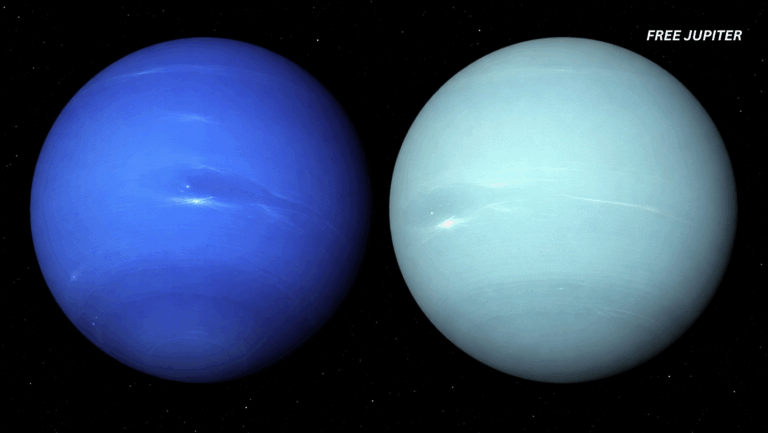Friendly Note: FreeJupiter.com shares general info for curious minds 🌟 Please fact-check all claims—and always check health matters with a professional 💙
That familiar earthy smell after a rainfall—fresh, calming, almost nostalgic—has captivated humans for generations. Whether it reminds you of childhood, camping trips, or lazy afternoons, this scent has a name: petrichor.
While it may seem like a simple phenomenon, the truth behind it is a layered story of plant chemistry, soil bacteria, weather patterns, and even evolutionary psychology.
Let’s take a deeper dive into why this rain smell exists, how it happens, and why we humans are so oddly attached to it.
What Exactly Is Petrichor?
The term petrichor was introduced in 1964 by two Australian scientists, Isabel Joy Bear and R.G. Thomas, in a paper published in Nature. They combined the Greek word petra (stone) and ichor (the mythical fluid said to run through the veins of gods) to describe the scent that emerges when rain falls on dry ground.
Their research revealed that the pleasant smell wasn’t just moisture—it came from a yellowish oil trapped in dry rocks and soil. When this oil is released by rain or humidity, it gives off that signature scent. This discovery led to decades of further research into where this oil originates and how it spreads through the air.
Where Does Petrichor Come From?
The key ingredients in petrichor come from multiple sources:
🌿 Plant Oils
During long dry periods, many plants release oily compounds that accumulate on the surfaces of rocks and soil. These oils are part of the plants’ defense system—signaling seeds to stay dormant and preventing unnecessary growth during harsh conditions. When rain finally arrives, it washes these oils out of the soil and into the air, contributing to the distinct aroma.
🦠 Soil-Dwelling Microorganisms
One of the main contributors to the smell is a compound called geosmin, produced by actinomycetes, a type of bacteria that thrives in moist soil. When the soil dries out, these microbes produce spores, and when it rains again, the spores are disturbed and geosmin is released. Humans are incredibly sensitive to geosmin—we can detect it at concentrations as low as five parts per trillion.
This means even the tiniest trace can be enough to tickle your nose with that familiar “wet dirt” scent.
🌬️ Ozone in the Air
Sometimes, especially before a thunderstorm, the air smells sharp or metallic. That’s due to ozone, a molecule made of three oxygen atoms. Lightning can split oxygen molecules in the atmosphere, and those free atoms sometimes recombine into ozone. Winds then carry this sharp-smelling ozone from high altitudes down to nose level.
So, if you’ve ever said “It smells like rain is coming,” you might’ve been right—your nose might have picked up a change in humidity, geosmin, or even ozone.
Read more: Scientists Discover Massive Underground Reservoir Holding 3x More Water Than All Our Oceans Combined
How Rain Triggers the Scent
Now let’s break down the physical part of how that smell gets into the air:
- Humidity Rises
Just before it rains, humidity increases. That moisture can begin to lift plant oils and microbial compounds from the ground into the air. - Raindrops Hit the Ground
When rain finally falls, especially after a dry spell, the droplets land with force onto dusty, porous surfaces like clay or sand. This impact traps tiny pockets of air beneath the droplet. - Aerosols Are Released
Like champagne bubbles rising and popping, these air pockets burst, flinging microscopic particles (called aerosols) into the air. These aerosols contain all the aromatic oils, geosmin, and other earthy compounds. - Wind Does the Rest
Once airborne, the scent particles are carried by the wind—sometimes for miles—until they reach your nose.
This entire process was filmed in slow motion by scientists at MIT using high-speed cameras. They were able to visualize the actual release of scent particles as tiny white bursts erupting from raindrops when they hit dry soil. That’s petrichor—caught in the act.
Why Do We Love the Smell of Rain?
The answer may lie in evolution. Throughout history, rain has been essential for survival—watering crops, refilling rivers, cooling heat-stressed lands. The smell of rain might have become wired into our brains as a signal of relief or abundance.
In fact, some researchers believe we developed a positive association with petrichor over millennia. Our ancestors may have learned to associate that smell with the end of droughts, a chance to plant food, or even just a reprieve from the scorching sun.
There’s even evidence from animal studies that other creatures are sensitive to these smells too. Camels and desert beetles, for instance, are thought to use changes in soil scent to detect incoming rain from miles away—giving them time to find shelter or prepare.
Read more: Scientists Say They Have Discovered Hidden Physics in Vincent van Gogh’s ‘Starry Night’
Related Findings: Geosmin and Human Perception
One of the more curious discoveries is just how sensitive humans are to geosmin—even more so than to smoke or ammonia. Some scientists speculate that this might be why we also enjoy the smell of freshly turned soil, root vegetables like beets (which contain geosmin), or forest hikes after rainfall.
In perfumery and aromatherapy, geosmin-inspired notes are even being synthesized to replicate the comforting essence of rain and soil. So next time you buy a candle labeled “Rain” or “Earth,” chances are you’re smelling a lab-crafted cousin of geosmin.
Not All Rain Smells the Same
Have you ever noticed that the scent of rain is stronger in certain places? That’s not your imagination. Several factors influence the intensity of petrichor:
- Soil type – Sandy and clay-heavy soils release aerosols better than peaty or highly organic soils.
- Air temperature – Warm air helps scents spread more efficiently.
- Pollution – Urban areas may experience less noticeable petrichor because other smells overpower it.
- Rain intensity – Gentle or moderate rain creates more aerosols. Torrential rain? Not so much. The hard splash prevents the bubbles from forming.
Read more: There Are Mysterious Signals Coming From The Ice In Antarctica
Nature’s Hidden Language
Petrichor isn’t just a smell—it’s a signal. It’s nature’s way of telling us something has shifted. That water is coming. That dryness has ended. That something old is being renewed.
It’s also a reminder that even the most ordinary moments—like walking outside after a summer rain—can carry extraordinary science behind them. So the next time you breathe in that nostalgic scent, know that your nose is catching ancient chemical cues, microscopic explosions, and perhaps even a whisper from the gods of myth.










